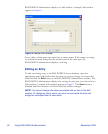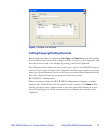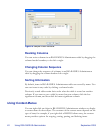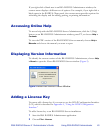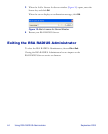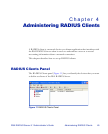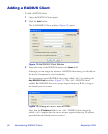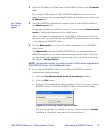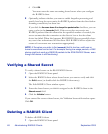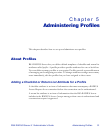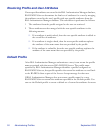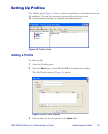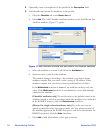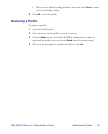48 Administering RADIUS Clients September 2005
d Click OK.
You must enter the same accounting shared secret when you configure
the RADIUS client.
8 Optionally, indicate whether you want to enable keepalive processing and
specify how long the server waits for RADIUS packets from the client before
assuming connectivity has been lost.
If you click the
Assume down if no keepalive packets after checkbox, you can
enter a value in the
(seconds) field. If the server does not receive any
RADIUS packets from this client after the specified number of seconds, the
server assumes that the connection to the client is lost or that the client
device has failed. When this happens, RSA RADIUS Server gracefully closes
any user it has authenticated for the client. RSA RADIUS Server adjusts the
counts of concurrent user connections appropriately.
NOTE: If the value you enter in the (seconds) field is too low, valid user or
tunnel connections can be lost. For example, during low usage periods, a RAS
device might not send any RADIUS packets to the RSA RADIUS Server, even
though the device is still functioning.
Verifying a Shared Secret
To verify a shared secret on the RSA RADIUS Server:
1 Open the RADIUS Clients panel.
2 Select the RADIUS client whose shared secret you want to verify and click
the
Edit button (or double-click the RADIUS client entry).
The Edit RADIUS Client window opens.
3 Enter the shared secret you think is assigned to the RADIUS client in the
Shared secret field.
4 Click the
Validate button.
If you entered the correct shared secret, the Validation Successful window opens.
Click
OK.
Deleting a RADIUS Client
To delete a RADIUS client:
1 Open the RADIUS Clients panel.



